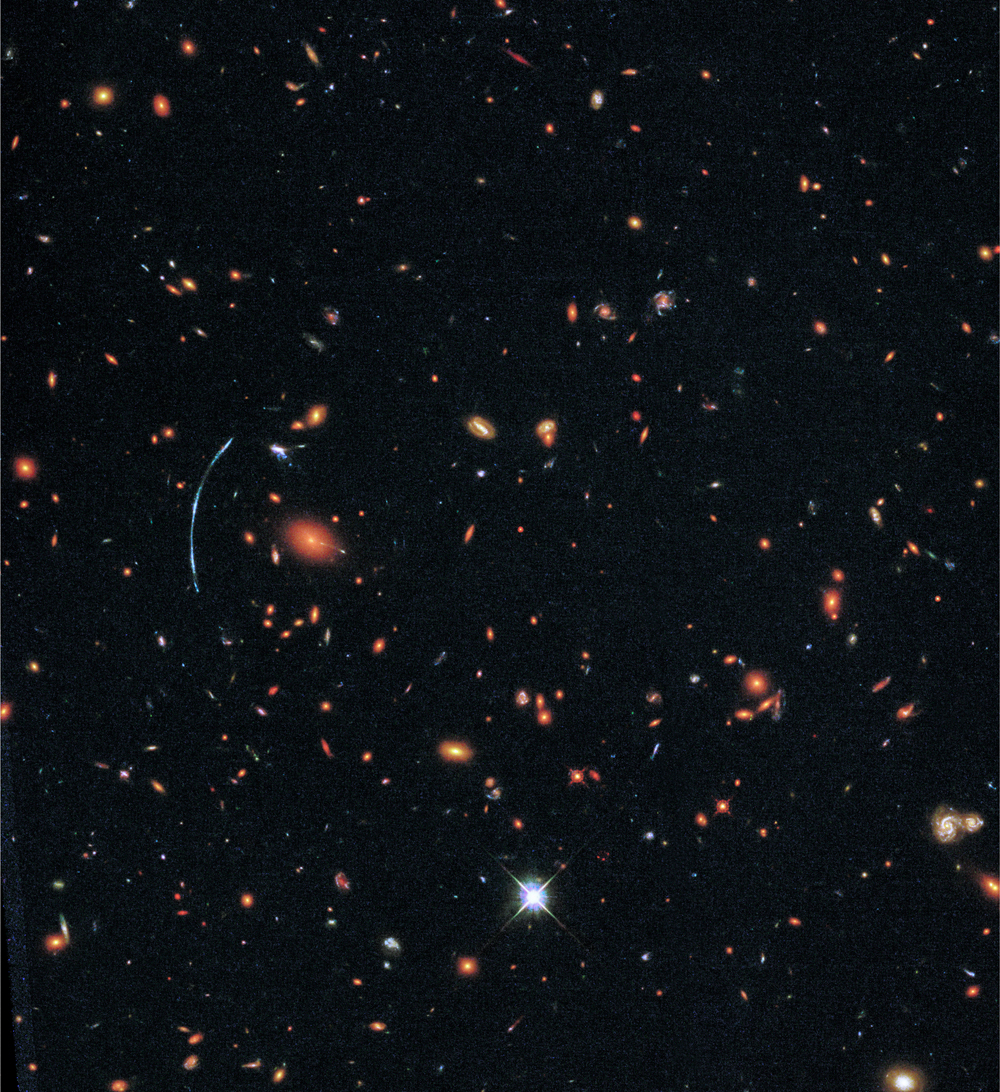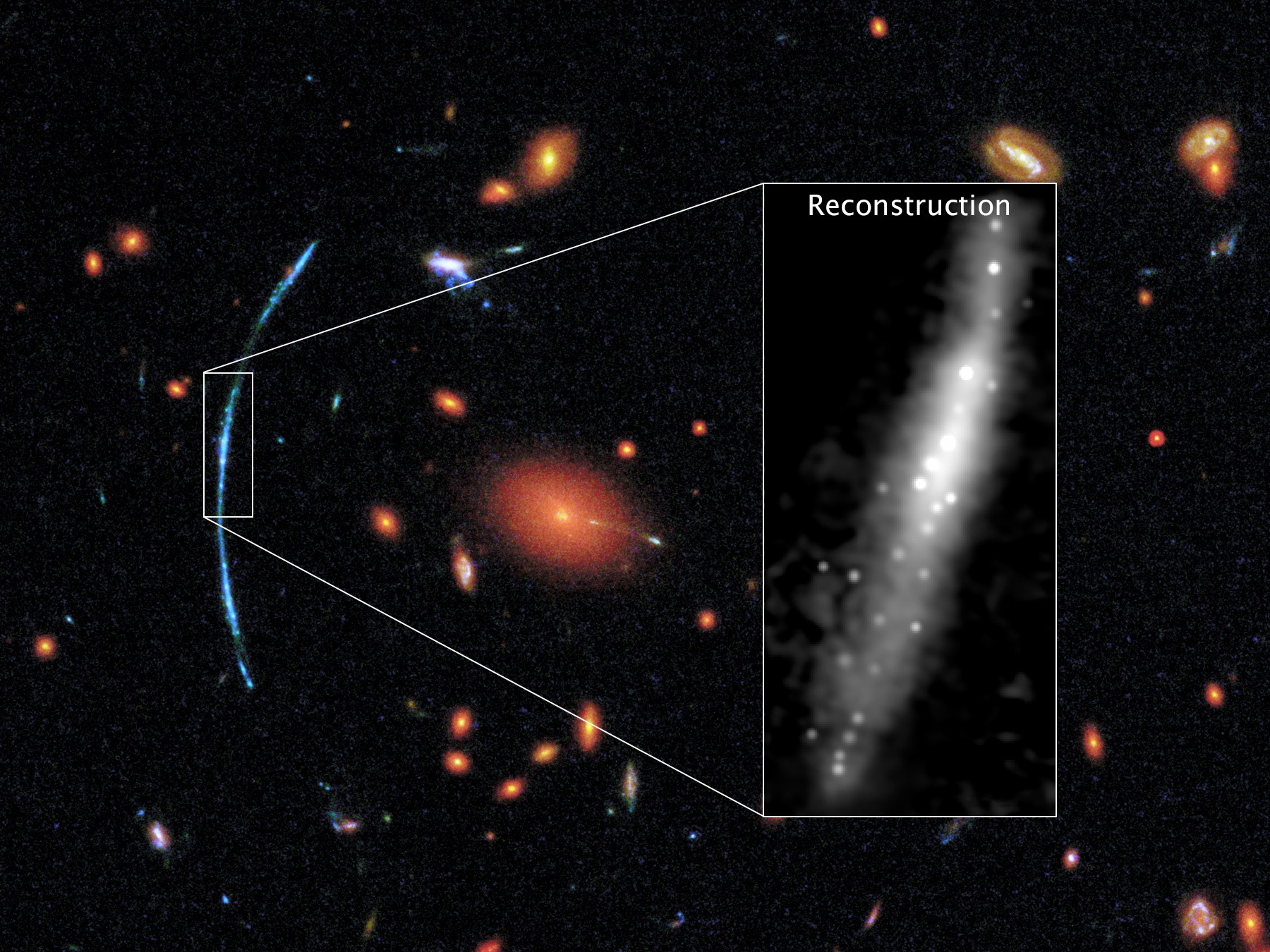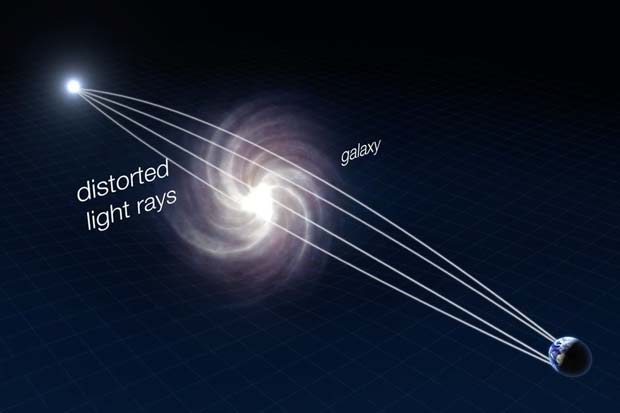'Fireworks' Images from Hubble Telescope Capture Stars Forming Just After the Big Bang

A natural magnifying glass has sharpened images captured by NASA's Hubble Space Telescope, revealing a distant galaxy that contradicts existing theories about early star formation. By pairing Hubble with a massive galaxy cluster, scientists captured images 10 times sharper than the space telescope could snap on its own.
The resulting images reveal star-forming knots of newborn stars only 200 to 300 light-years across, in a galaxy that formed only 2.7 billion years after the Big Bang. Previous theories suggested that star-forming regions in the early universe were much larger — at least 3,000 light-years across. [Hubble Space Telescope's Latest Cosmic Views]
"There are star-forming knots as far down in size as we can see," Traci Johnson, a doctoral student in astronomy at the University of Michigan, said in a statement. Johnson is the lead author on two of the three research papers describing Hubble's new results, which were published July 6 in the The Astrophysical Journal and the The Astrophysical Journal Letters.

Fireworks everywhere
Though Hubble was built to peer into the early universe, even the legendary space telescope can sometimes use a boost. In this case, astronomers paired the instrument with a gravitational lens, a massive structure in space that bends and distorts light to allow glimpses at greater distances.
Gravitational lenses can be any type of object, ranging from a single massive galaxy to an entire cluster. As light from the more distant galaxy passes the massive object, it is bent and distorted into an arc. For the newfound cluster, this magnified the object almost 30 times. Scientists had to develop a special computer code to remove the distortions and reveal the galaxy as it would normally appear.

Without the boost of the gravitational lens, the disk galaxy would appear smooth and unremarkable through the Hubble telescope, Johnson said. With it, however, scientists could catch an amazing glimpse of the early universe.
"When we saw the reconstructed image, we said, 'Wow, it looks like fireworks are going off everywhere,'" said Jane Rigby, an astronomer at NASA's Goddard Space Flight Center in Greenbelt, Maryland, and lead author of the third paper.
Get the Space.com Newsletter
Breaking space news, the latest updates on rocket launches, skywatching events and more!
The newly spotted galaxy lies about 11 billion light-years from the sun. Because of the connection between distance and time, that means astronomers can see it as it looked 11 billion years ago, only a few billion years after the Big Bang that kick-started the universe about 13.8 billion years ago.
Whereas Hubble revealed newborn stars, NASA's upcoming James Webb Space Telescope will reveal older, redder stars. Scheduled to launch in October 2018, Webb will also be able to peer through the dust around the galaxy.
"With the Webb Telescope, we'll be able to tell you what happened in this galaxy in the past, and what we missed with Hubble because of dust," Rigby said.
Follow Nola Taylor Redd on Twitter @NolaTRedd Facebook or Google+. Follow us at @Spacedotcom, Facebook or Google+. Originally published on Space.com.
Join our Space Forums to keep talking space on the latest missions, night sky and more! And if you have a news tip, correction or comment, let us know at: community@space.com.

Nola Taylor Tillman is a contributing writer for Space.com. She loves all things space and astronomy-related, and enjoys the opportunity to learn more. She has a Bachelor’s degree in English and Astrophysics from Agnes Scott college and served as an intern at Sky & Telescope magazine. In her free time, she homeschools her four children. Follow her on Twitter at @NolaTRedd









